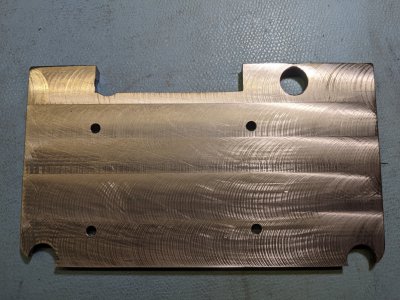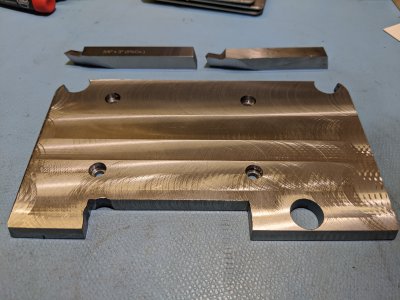- Joined
- Apr 23, 2018
- Messages
- 6,883
Mikey has contributed more to this site on the subject of grinding HSS lathe bits for beginners on up than anybody else here. There is a megathread here where you can read several "a-ha!" moments per page from a number of folks new to grinding the hard stuff.
There is quite a difference between different belt sanders, and belt grinders deserve a category of their own. Belt grinders have 4-pulley systems that eliminate belt hop and wander, and they are always equipped with a glass platen or better. They are usually a prized tool by those who build them. All I have to work with is a 2x48 belt sander, same as WobblyHand. The Jet that I've had since the 1980s runs pretty smooth, but the pop-pop-pop from the belt seam (Norton or USA zircon belts only) is enough to discourage me from grinding lathe bits with it. I guess it's different from free-handing a drill bit in that with the drill you only need to make the correct sweeping movement once or twice per side. That's like a blind hog finding some acorns compared to grinding a perfect plane on lathe bit, which would take much more practice.
The reason I advocate fixtures is they give practically perfect results. Machine work is done in a fixture because the work gets located and held precisely, so I look at lathe bits as a machining process rather than an artistic one and seek a way to hold the work while removing metal.
I always welcome discussion, even if it means I have to modify my opinions (oh, darn!). I'm here to learn, and I don't mind a little back and forth when it comes to growing my understanding of it all.
There is quite a difference between different belt sanders, and belt grinders deserve a category of their own. Belt grinders have 4-pulley systems that eliminate belt hop and wander, and they are always equipped with a glass platen or better. They are usually a prized tool by those who build them. All I have to work with is a 2x48 belt sander, same as WobblyHand. The Jet that I've had since the 1980s runs pretty smooth, but the pop-pop-pop from the belt seam (Norton or USA zircon belts only) is enough to discourage me from grinding lathe bits with it. I guess it's different from free-handing a drill bit in that with the drill you only need to make the correct sweeping movement once or twice per side. That's like a blind hog finding some acorns compared to grinding a perfect plane on lathe bit, which would take much more practice.
The reason I advocate fixtures is they give practically perfect results. Machine work is done in a fixture because the work gets located and held precisely, so I look at lathe bits as a machining process rather than an artistic one and seek a way to hold the work while removing metal.
I always welcome discussion, even if it means I have to modify my opinions (oh, darn!). I'm here to learn, and I don't mind a little back and forth when it comes to growing my understanding of it all.


